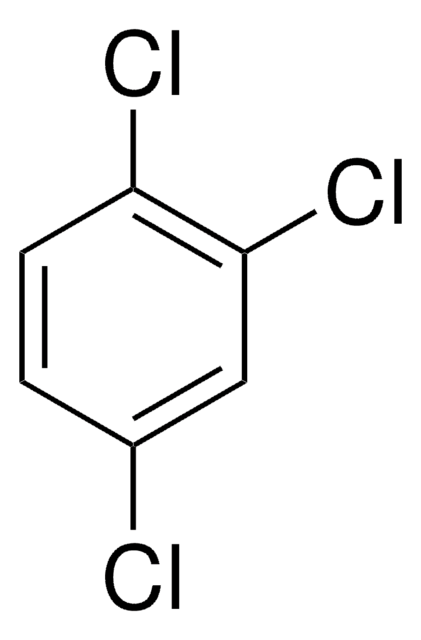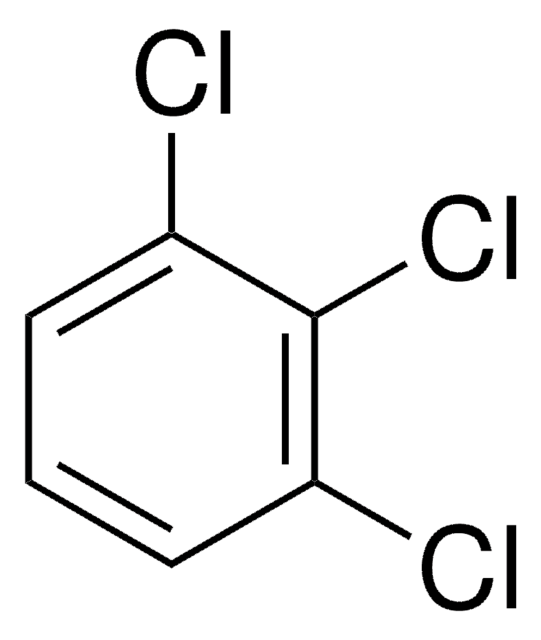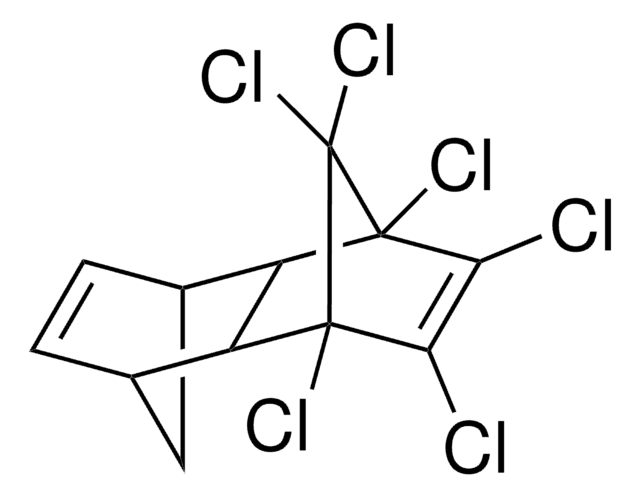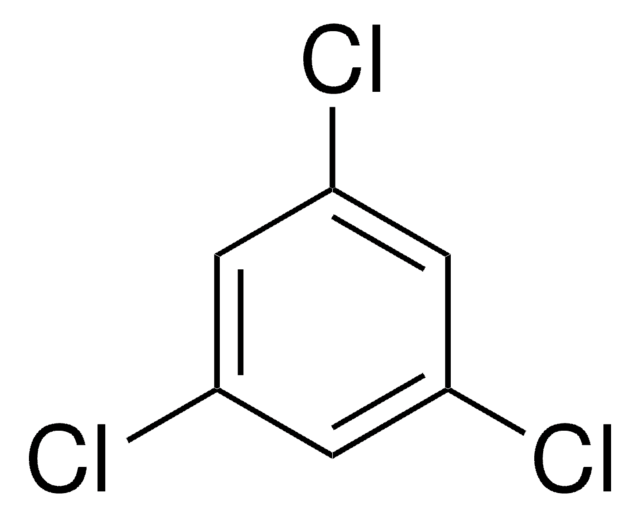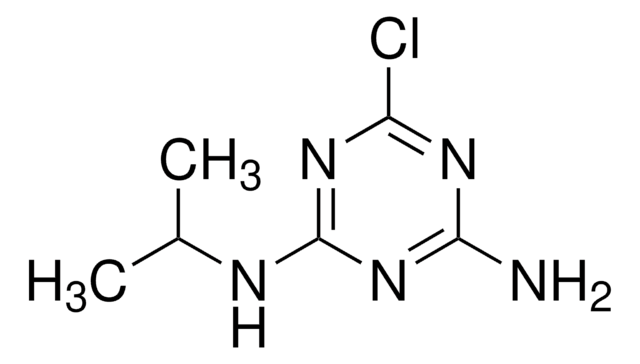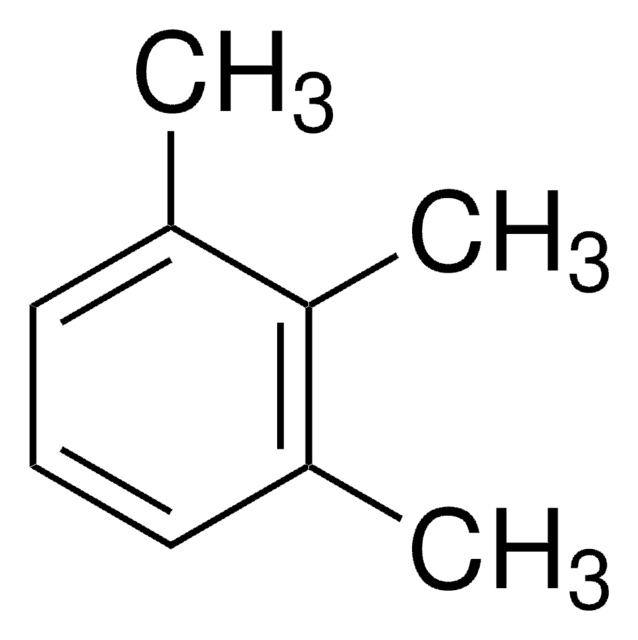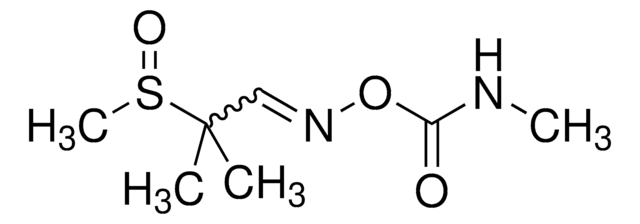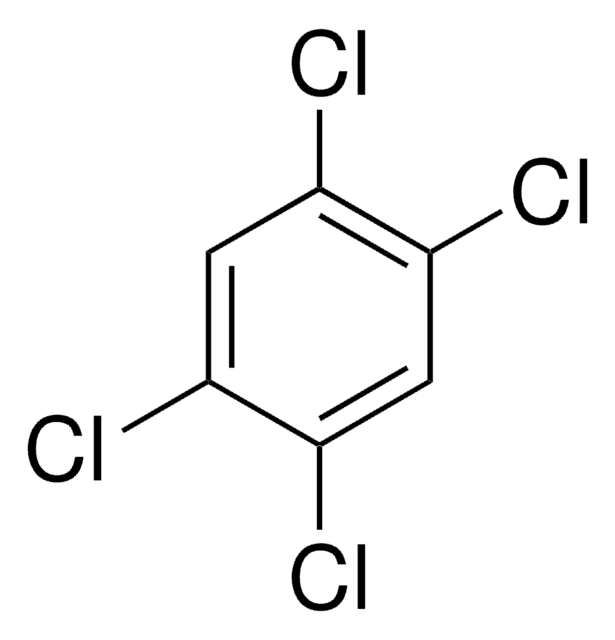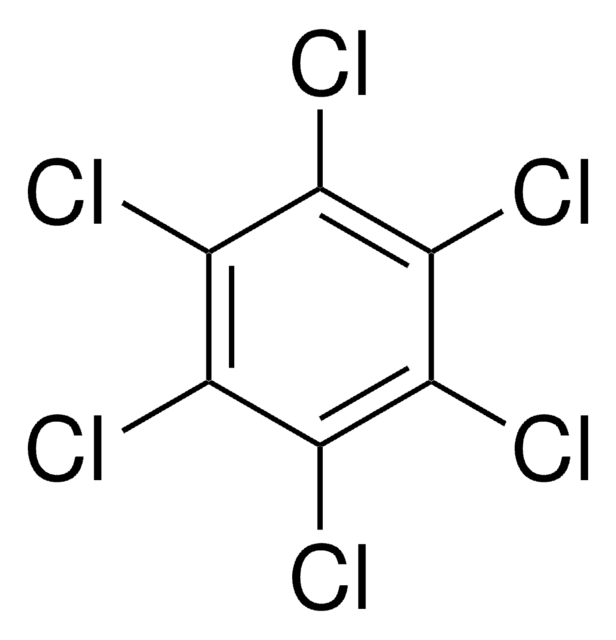36627
1,2,4-Trichlorobenzene
PESTANAL®, analytical standard
About This Item
Productos recomendados
grado
analytical standard
Nivel de calidad
densidad de vapor
>6 (vs air)
presión de vapor
1 mmHg ( 40 °C)
Línea del producto
PESTANAL®
temp. de autoignición
1060 °F
caducidad
limited shelf life, expiry date on the label
lim. expl.
6.6 %, 150 °F
técnicas
HPLC: suitable
gas chromatography (GC): suitable
índice de refracción
n20/D 1.571 (lit.)
bp
214 °C (lit.)
mp
16 °C (lit.)
densidad
1.454 g/mL at 25 °C (lit.)
aplicaciones
agriculture
environmental
formato
neat
cadena SMILES
Clc1ccc(Cl)c(Cl)c1
InChI
1S/C6H3Cl3/c7-4-1-2-5(8)6(9)3-4/h1-3H
Clave InChI
PBKONEOXTCPAFI-UHFFFAOYSA-N
¿Está buscando productos similares? Visita Guía de comparación de productos
Descripción general
Aplicación
Información legal
Palabra de señalización
Warning
Frases de peligro
Consejos de prudencia
Clasificaciones de peligro
Acute Tox. 4 Oral - Aquatic Acute 1 - Aquatic Chronic 1 - Skin Irrit. 2
Código de clase de almacenamiento
6.1C - Combustible acute toxic Cat.3 / toxic compounds or compounds which causing chronic effects
Clase de riesgo para el agua (WGK)
WGK 3
Punto de inflamabilidad (°F)
235.4 °F - closed cup
Punto de inflamabilidad (°C)
113.0 °C - closed cup
Equipo de protección personal
Eyeshields, Faceshields, Gloves, type ABEK (EN14387) respirator filter
Elija entre una de las versiones más recientes:
¿Ya tiene este producto?
Encuentre la documentación para los productos que ha comprado recientemente en la Biblioteca de documentos.
Los clientes también vieron
Protocolos
US EPA Method TO-17: GC Analysis of Volatiles on VOCOL® after Collection/Desorption using Air Toxics Tube
US EPA Method 8260: GC Analysis of Volatiles on SPB®-624 after Purge & Trap using "K" Trap, Fast GC Analysis
Nuestro equipo de científicos tiene experiencia en todas las áreas de investigación: Ciencias de la vida, Ciencia de los materiales, Síntesis química, Cromatografía, Analítica y muchas otras.
Póngase en contacto con el Servicio técnico